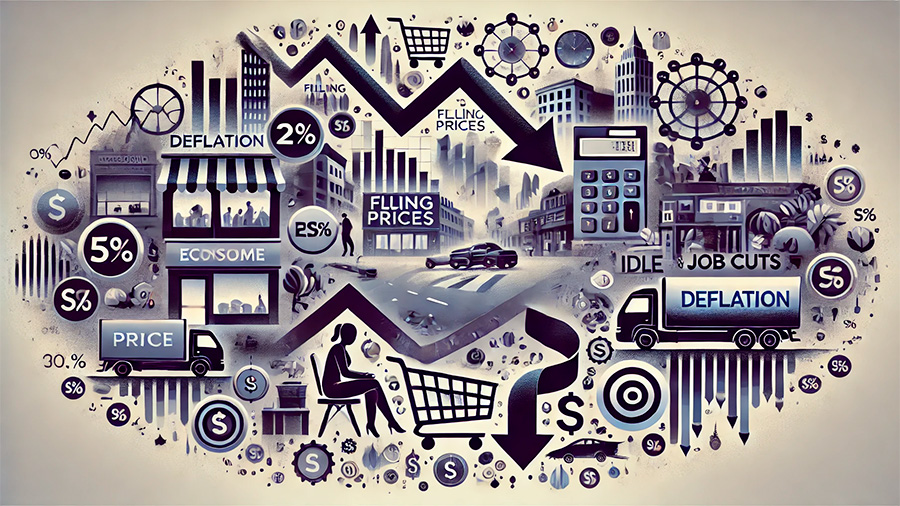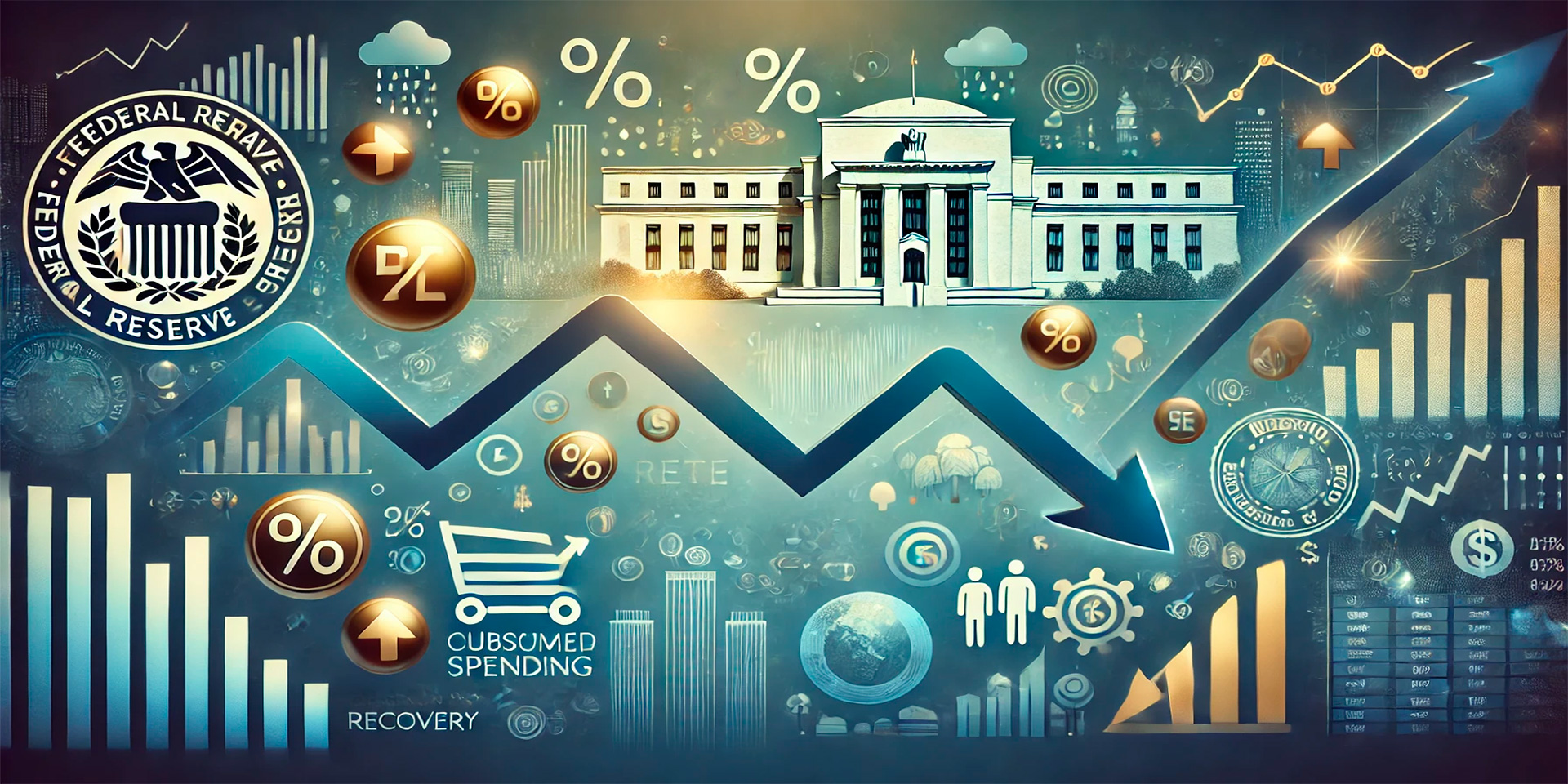The Federal Reserve (Fed) plays a pivotal role in stabilizing the U.S. economy, especially during economic downturns or recessions. One of its most powerful tools to stimulate economic growth during a recession is cutting interest rates. By lowering the federal funds rate—the rate at which banks lend to each other overnight—the Fed encourages borrowing, spending, and investment. This, in turn, helps boost economic activity, creating a ripple effect across various sectors of the economy.
Rate cuts serve as a key component of the Fed’s monetary policy strategy, aiming to make borrowing cheaper for consumers and businesses alike. By reducing the cost of credit, rate cuts are designed to stimulate spending, investment, and production, all of which are crucial in reviving an economy in recession.
How Rate Cuts Work During Economic Downturns
During a recession, economic activity slows, and businesses face reduced consumer demand. In response, companies may cut back on hiring, lower production, or even lay off workers, further weakening the economy. To prevent a deepening recession and promote recovery, the Fed steps in with rate cuts to lower the cost of borrowing, encouraging both consumer spending and business investment.
The Mechanics of a Rate Cut
The federal funds rate is the benchmark interest rate that banks charge one another for overnight loans. When the Fed lowers this rate, it influences other interest rates throughout the economy, including those for mortgages, auto loans, business loans, and credit cards. Here’s how the process works:
- Cheaper borrowing for businesses: Lower interest rates make it easier for businesses to take out loans to expand operations, invest in new technologies, or hire additional staff.
- Encouraging consumer spending: Rate cuts lead to lower interest rates on consumer loans, such as mortgages and auto loans, which incentivizes people to borrow and spend, stimulating demand for goods and services.
- Boosting investment: With lower borrowing costs, businesses are more likely to invest in growth, which can lead to increased production, higher employment, and greater overall economic activity.
By reducing interest rates, the Fed aims to make borrowing more attractive, which encourages spending and investment—key drivers of economic recovery during a recession.

How Rate Cuts Influence Consumer Behavior
Rate cuts not only benefit businesses but also have a significant impact on consumer behavior. As interest rates fall, consumers are more likely to borrow money for big-ticket purchases like homes and cars. Lower borrowing costs also make it more affordable to refinance existing debt, freeing up disposable income that can be spent on goods and services.
Lower Mortgage Rates
One of the most direct ways consumers feel the effects of a Fed rate cut is through lower mortgage rates. As the Fed reduces the federal funds rate, banks and lenders typically lower the rates on new mortgages and refinances. This creates an opportunity for homebuyers to secure more affordable loans, making homeownership more accessible.
- Boosting the housing market: Lower mortgage rates stimulate demand for homes, leading to increased construction activity and higher sales in the housing sector, which contributes to overall economic growth.
- Refinancing opportunities: Homeowners with existing mortgages can take advantage of lower rates to refinance their loans, reducing their monthly payments and freeing up cash for other spending.
With lower mortgage rates, the housing market often sees a surge in activity, which plays a critical role in economic recovery during a recession.
Auto Loans and Consumer Spending
Similarly, rate cuts make auto loans more affordable, encouraging consumers to finance car purchases. Lower interest rates mean smaller monthly payments, allowing more consumers to afford vehicles. This uptick in auto sales boosts demand across the automotive industry, leading to increased production, job creation, and economic growth.
- Increased consumer spending: With cheaper financing options, consumers are more willing to spend on durable goods such as cars, furniture, and electronics, all of which help drive economic recovery.
- Supporting industries: Higher consumer spending on goods like automobiles supports industries that manufacture, sell, and maintain these products, generating a positive economic feedback loop.
By making auto loans and other consumer loans more affordable, Fed rate cuts stimulate spending in key sectors that are vital to economic health.
Rate Cuts and Business Investment
In addition to encouraging consumer spending, rate cuts are designed to stimulate business investment. Lower interest rates make borrowing cheaper for companies, allowing them to finance growth, invest in new equipment, and hire more workers. This increased investment can lead to higher productivity, greater output, and, ultimately, a more robust economic recovery.
Encouraging Expansion and Hiring
When interest rates are low, businesses can borrow money at reduced costs, making it more financially feasible to invest in expansion or operational improvements. For example, a company might use a loan to open new facilities, purchase advanced machinery, or launch new product lines, all of which can lead to higher productivity and job creation.
- Job creation: As businesses expand and invest, they often need to hire more employees, reducing unemployment and increasing overall household incomes.
- Increased output: With greater access to capital, companies can ramp up production, contributing to stronger economic growth.
By promoting business expansion and investment, rate cuts are crucial for fostering job growth and boosting productivity during an economic downturn.
Supporting Small Businesses
Rate cuts can be especially beneficial for small businesses, which often rely on loans to fund their operations and growth. Lower interest rates reduce the cost of borrowing, making it easier for small businesses to access the capital they need to stay afloat during tough economic times.
- Easier access to credit: Lower borrowing costs can help small businesses secure loans for working capital, new inventory, or equipment purchases.
- Reducing operational costs: By refinancing existing loans at lower rates, small businesses can reduce their interest expenses, freeing up funds for other needs, such as payroll or marketing.
For small businesses struggling during a recession, access to affordable credit is a lifeline that helps them survive and continue contributing to the economy.

The Role of Rate Cuts in Preventing Deflation
During a recession, one of the risks the Fed seeks to avoid is deflation—a situation where prices fall across the economy, leading to reduced consumer spending and lower profits for businesses. Deflation can create a downward spiral, as consumers delay purchases in anticipation of lower prices, and businesses cut production and jobs in response to decreased demand.
Stimulating Demand to Counter Deflation
To combat deflationary pressures, the Fed uses rate cuts to stimulate demand by making borrowing cheaper and encouraging spending. By lowering the cost of loans and mortgages, the Fed aims to boost consumption and investment, which helps keep prices stable and prevents deflation.
- Preventing price declines: Rate cuts encourage consumers to spend rather than save, supporting demand for goods and services and preventing prices from falling.
- Supporting business revenue: By sustaining demand, rate cuts help businesses maintain their revenue streams, which supports ongoing production and employment.
In this way, the Fed’s rate cuts act as a buffer against deflation, helping to stabilize the economy during a recession.
Challenges and Limitations of Rate Cuts
While rate cuts are a powerful tool for stimulating the economy, they are not without challenges and limitations. For example, during a prolonged recession, lowering interest rates may not be enough to restore economic growth, especially if consumers and businesses remain cautious about spending and borrowing.
Limited Effectiveness in Deep Recessions
In some cases, even significantly lower interest rates may not be enough to stimulate economic activity. For instance, during the Great Recession of 2008, the Fed cut interest rates to near zero, but businesses and consumers were still hesitant to borrow and spend due to uncertainty about the economic outlook.
- Reduced confidence: If consumers and businesses lack confidence in the future of the economy, they may choose to save rather than spend, limiting the effectiveness of rate cuts.
- Zero lower bound: When interest rates approach zero, the Fed has limited room to cut rates further, reducing the impact of monetary policy.
In these situations, the Fed may need to rely on additional tools, such as quantitative easing or fiscal stimulus, to support economic recovery.
Inflation Risks
Another challenge associated with rate cuts is the potential for inflation. While the Fed lowers rates to stimulate economic growth, too much growth can lead to rising prices if demand outstrips supply. If inflation becomes too high, the Fed may be forced to raise rates again, which can slow economic recovery.
- Balancing growth and inflation: The Fed must carefully monitor economic conditions to ensure that rate cuts do not lead to excessive inflation, which could erode purchasing power and harm the economy in the long run.
While rate cuts are essential for fighting recessions, they must be carefully managed to avoid creating new economic challenges, such as runaway inflation.
Final Thoughts: The Power of Rate Cuts in Fighting Recessions
Rate cuts are one of the Fed’s most effective tools for stimulating the economy during a recession. By lowering borrowing costs, the Fed encourages consumer spending, business investment, and economic growth, helping to reverse the effects of a downturn. While rate cuts are not without challenges—such as inflation risks and limitations during deep recessions—they remain a critical component of the Fed’s monetary policy.
As the Fed continues to use rate cuts to manage economic cycles, understanding how these changes impact loans, spending, and investment is crucial for consumers and businesses alike. By taking advantage of lower borrowing costs during periods of rate cuts, individuals and companies can better navigate economic downturns and position themselves for future growth.

